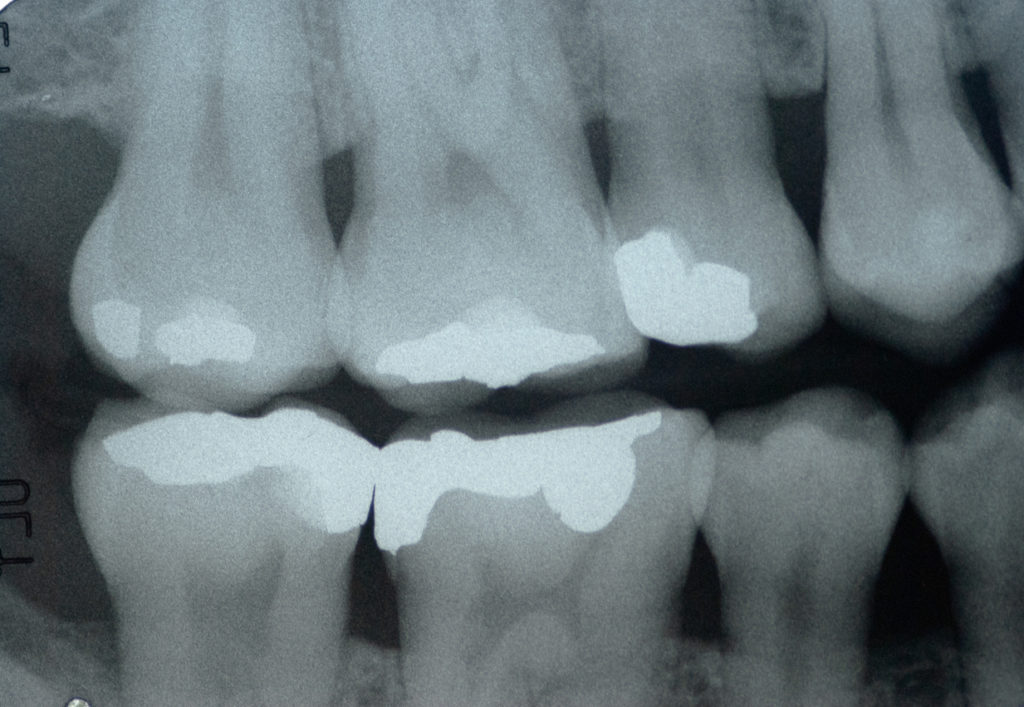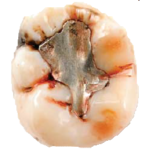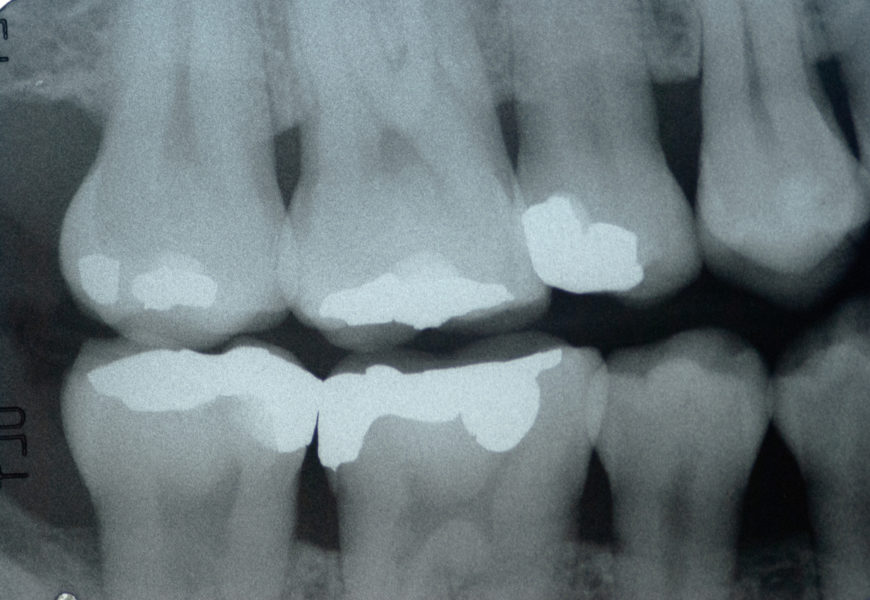
Dental health is a critical part of general health, and can have a major impact on the progress of recovery for Gerson patients. Because so many people have amalgam fillings, we want to discuss how they can affect health and how and when to remove them in the safest way possible.
What are amalgam fillings?
 Amalgam fillings are used in the dental industry to fill cavities caused by tooth decay and restore teeth to their original shape and size. “Amalgam” is a generic term applied to the silver-mercury filling most commonly used. Amalgam literally means “mixed with mercury.” Amalgam fillings are typically composed of 50 percent mercury and 50 percent other metals, including silver, tin and copper.
Amalgam fillings are used in the dental industry to fill cavities caused by tooth decay and restore teeth to their original shape and size. “Amalgam” is a generic term applied to the silver-mercury filling most commonly used. Amalgam literally means “mixed with mercury.” Amalgam fillings are typically composed of 50 percent mercury and 50 percent other metals, including silver, tin and copper.
Why are amalgam fillings used?
Amalgam fillings have been used for decades and were primarily introduced to the dental industry as an inexpensive and long-lasting solution for dental cavities. They were introduced before anyone knew that dental cavities could be prevented through nutrition.
What are health effects of amalgams?
Mercury is a binding agent that creates a strong, durable and solid filling, but is highly toxic. The mercury from amalgam fillings is absorbed into the body through the tongue and the insides of cheeks. Once absorbed, mercury can destroy adjacent tissues, travel to the lymphatic system and be directly deposited into the blood stream. After entering the bloodstream, mercury travels throughout the entire body where it can disrupt cells it comes into contact with.
Mercury inhabits and disables body cells by traveling through the cell’s lipid soluble membranes. All cells have a lipid soluble membrane; therefore, mercury can attach to any cell in the body, rendering it abnormal. In turn, the abnormal cell is then subject to destruction by the immune system. This process can sometimes lead to autoimmune disorders if the mercury toxicity and exposure is high. Several diseases and disorders found to be related to mercury exposure include multiple sclerosis, lupus, Alzheimer’s, birth defects, ALS, arthritis, Parkinson’s, leukemia, diabetes, and seizures. Mercury is also associated with causing damage to the kidneys and central nervous system.
Amalgams have been known to cause disease since the 1830s. Previously, it was thought that mercury stayed within the amalgam filling and was not exposed to or released into the body. However, research has shown that approximately 34 micrograms of mercury from one amalgam filling leach out daily. Amalgams also have measurable electrical current. The higher the current, the faster the mercury is being released. The presence of other metals, such as gold and nickel crowns and removable bridges within the mouth, can cause mercury to be leached out faster. Therefore, the all-too common combination of mercury and other metals in the mouth can lead to disastrous health consequences. Chewing food and drinking hot liquires also increases the release of mercury from an amalgam filling. Everyone who has amalgam fillings has a buildup of mercury in their body. However, it is important to note that just because acute toxic effects are not being experienced does not mean there isn’t a build-up of mercury in the body. Testing the level of mercury in your body is a good way to determine the actual toxicity level.
How to remove fillings and options for replacements
Removal of amalgams is a tedious process. Amalgam filling removal can possibly result in the ingestion of mercury. Finding a biological or holistic dentist who is familiar with amalgam filling removal is vital to ensuring a successful procedure. During the procedure, both the dentist and patient are carefully protected from mercury exposure by covering their face and other exposed parts of the body with cloth. The dentist also places a rubber dam in the mouth to prevent debris from going down the throat, and gives the patient an outside air source to breathe so they don’t inhale mercury vapors. The dentist then uses the “cut and chunk” method to remove the amalgam in large chunks (as opposed to grinding it), which reduces mercury exposure. During and after removal, the area is suctioned with a high volume evacuation tool to remove all traces of the amalgam, followed by a rinse to clean the patients saliva.
Again, it is important to remember that amalgams should be removed by biological dentists who have experience using a safe removal procedure. For a list of biological dentists, see www.IAOMT.org.
Many of these dentists use the Dr. Huggins Protocol, (see references below). Replacement fillings can consist of composites (plastic), porcelain ceramic or metals (e.g. gold). Identifying which replacement material to use is critical for the success of the patient. The dentist should also be experienced in proper evaluation and placement of replacement fillings. Discuss these replacement options with your biological dentist before doing the removal procedure to determine which will be best for your individual needs.
Specifics for Gerson patients
Decreasing mercury toxicity in the body will ultimately lead to an increase in overall health and well-being. However, it may surprise you to hear that Gerson patients should not have amalgams removed in the early phases of their Gerson treatment. Patients should wait until they have been on the therapy at least six to nine months before consulting with a biological dentist and considering amalgam filling removal. The reason is because many patients need time to build up strength and immunity to physically handle the amalgam filling removal procedure.
After six to nine months have passed, the patient’s Gerson physician first needs to analyze their condition. Strength and diagnosis play a critical role in determining whether the patient is physically ready for the procedure. If the patient and his or her Gerson trained physician feel that amalgam filling removal is appropriate at that time, then an appointment can be scheduled. Patients should follow the protocol for removal recommended by their biological dentist. Contacting a Certified Gerson Practitioner is the first step in pursuing amalgam filling removal. As with any medical procedure, there are many factors that may impact a patient’s response and the specifics of the patient’s treatment may vary on an individual basis.
To help build your immune system, support metabolic function and promote cellular detoxification, learn more about the Gerson Institute’s
NEW Gerson Kitchen Digital Bundle!
Over 2 hours of online tutorials for cooking and juicing on the Gerson Therapy PLUS the Gerson Therapy Cookbook E-book!
References
Huggins Applied Healing. (n.d.). Amalgam/Mercury – Dental Filling Toxicity. Retrieved September 2, 2014, from http://www.hugginsappliedhealing.com/amalgam-mercury.php
Huggins Applied Healing. (n.d.). Protocol for Amalgam Removal and Dental Revision. Retrieved September 2, 2014, from http://www.hugginsappliedhealing.com/store/Protocol-For-Amalgam-Removal-And-Dental-Revision.html
International Academy of Oral Medicine and Toxicology. (n.d.). Safe Removal of Amalgam Fillings. Retrieved September 2, 2014, from http://iaomt.org/safe-removal-amalgam-fillings/
U.S. Food and Drug Administration. (n.d.). About Dental Amalgam Fillings. Retrieved September 2, 2014, from http://www.fda.gov/medicaldevices/productsandmedicalprocedures/dentalproducts/dentalamalgam/ucm171094.htm
This article originally appeared in the Fall 2014 issue of Healing News.
Written by: Taylor Oliver | Taylor Oliver is a patient follow-up specialist, co-author of the Gerson Therapy Cookbook and Assistant Chef at the Gerson Institute. Taylor is also part of the core research team for a current 40-year Melanoma Study (in partnership with the Gerson Research Organization).
Post by: Nicole Ferrer
Follow Along on Facebook, Instagram and Twitter
![]() Educational articles like this are made possible with the help of your donations. Help us continue the legacy of Dr. Max Gerson, his daughter Charlotte Gerson, and the thousands who rely on the Gerson Institute for vital educational materials and training.
Educational articles like this are made possible with the help of your donations. Help us continue the legacy of Dr. Max Gerson, his daughter Charlotte Gerson, and the thousands who rely on the Gerson Institute for vital educational materials and training.


